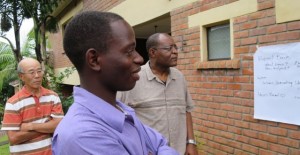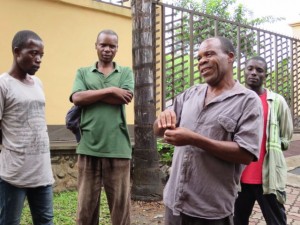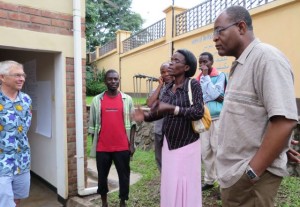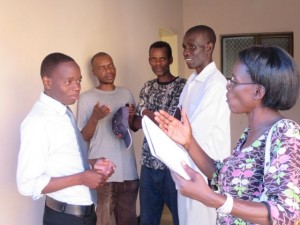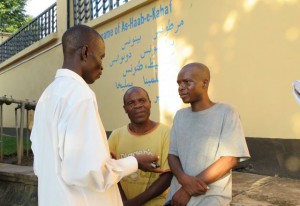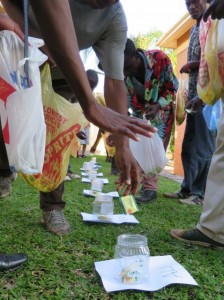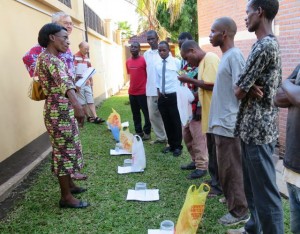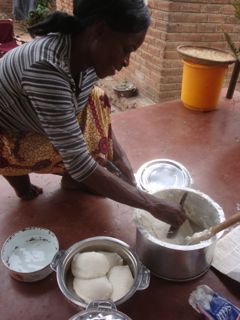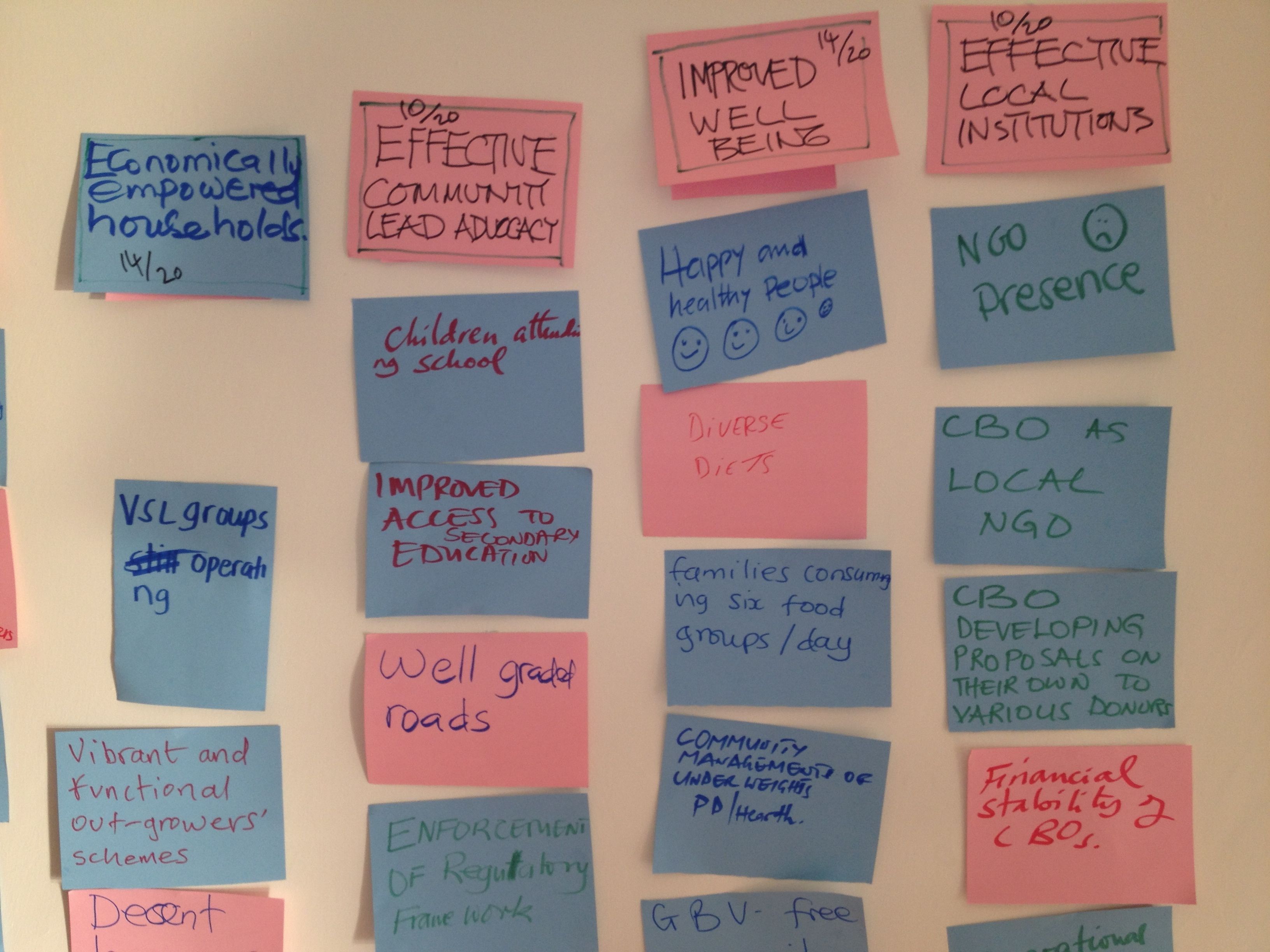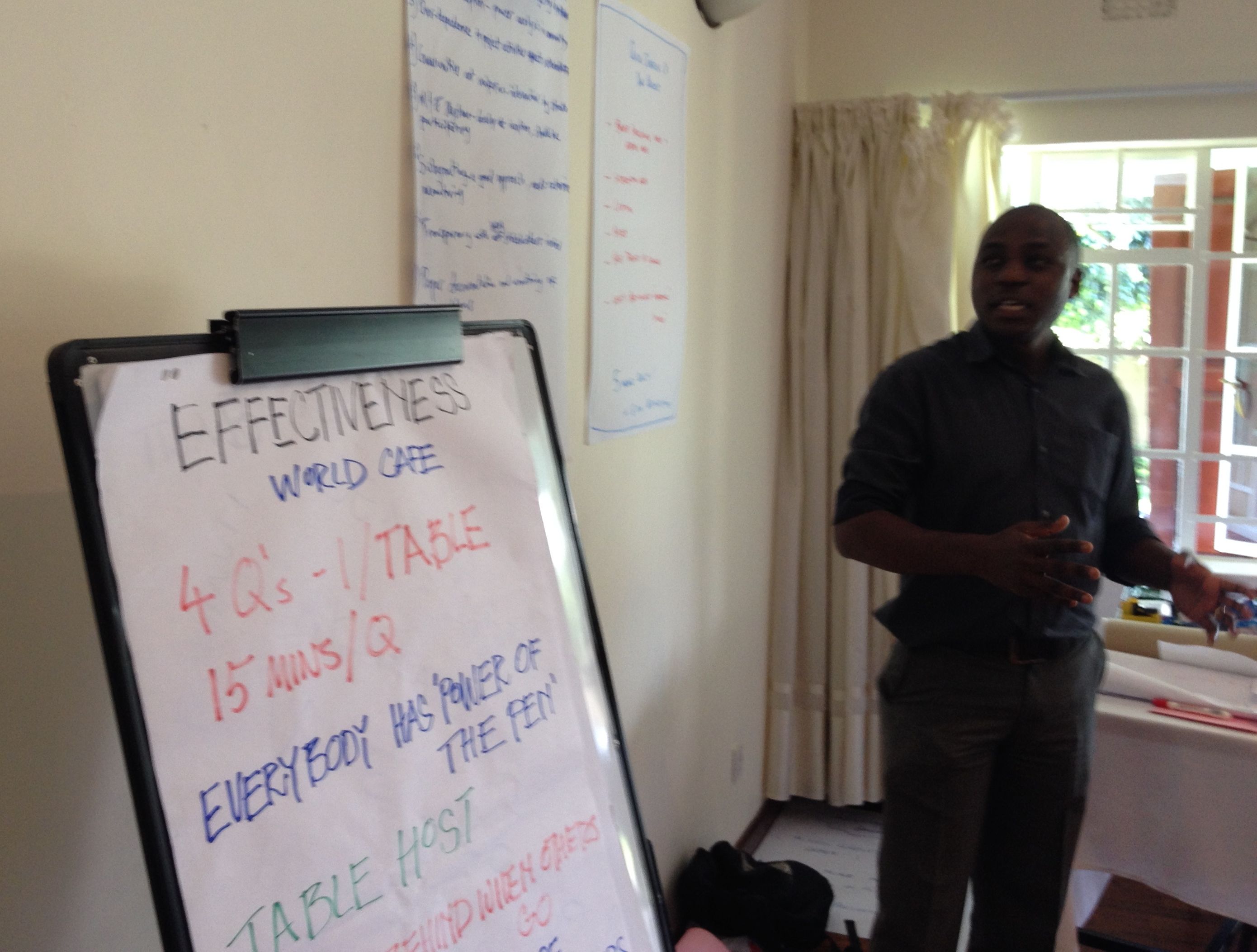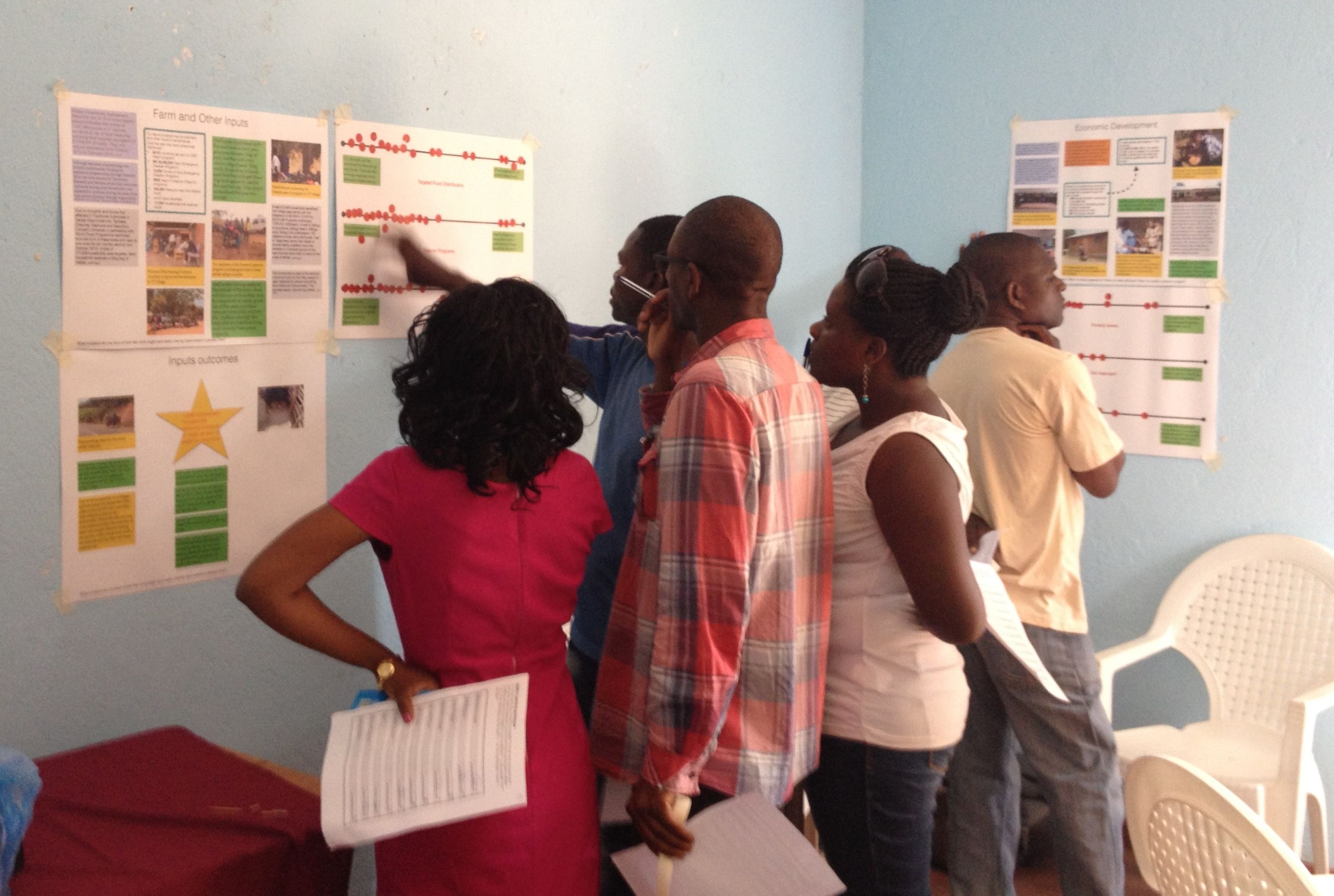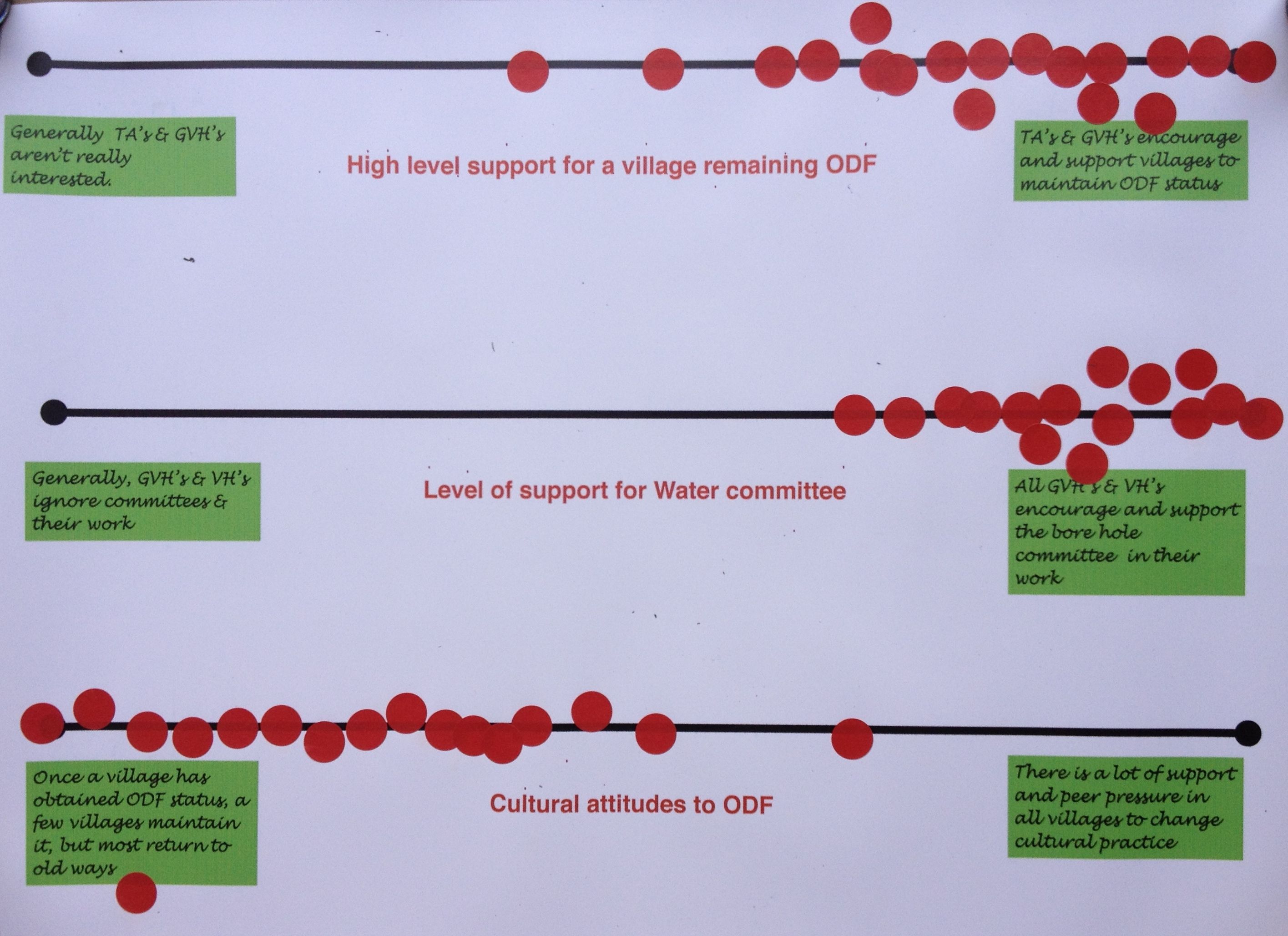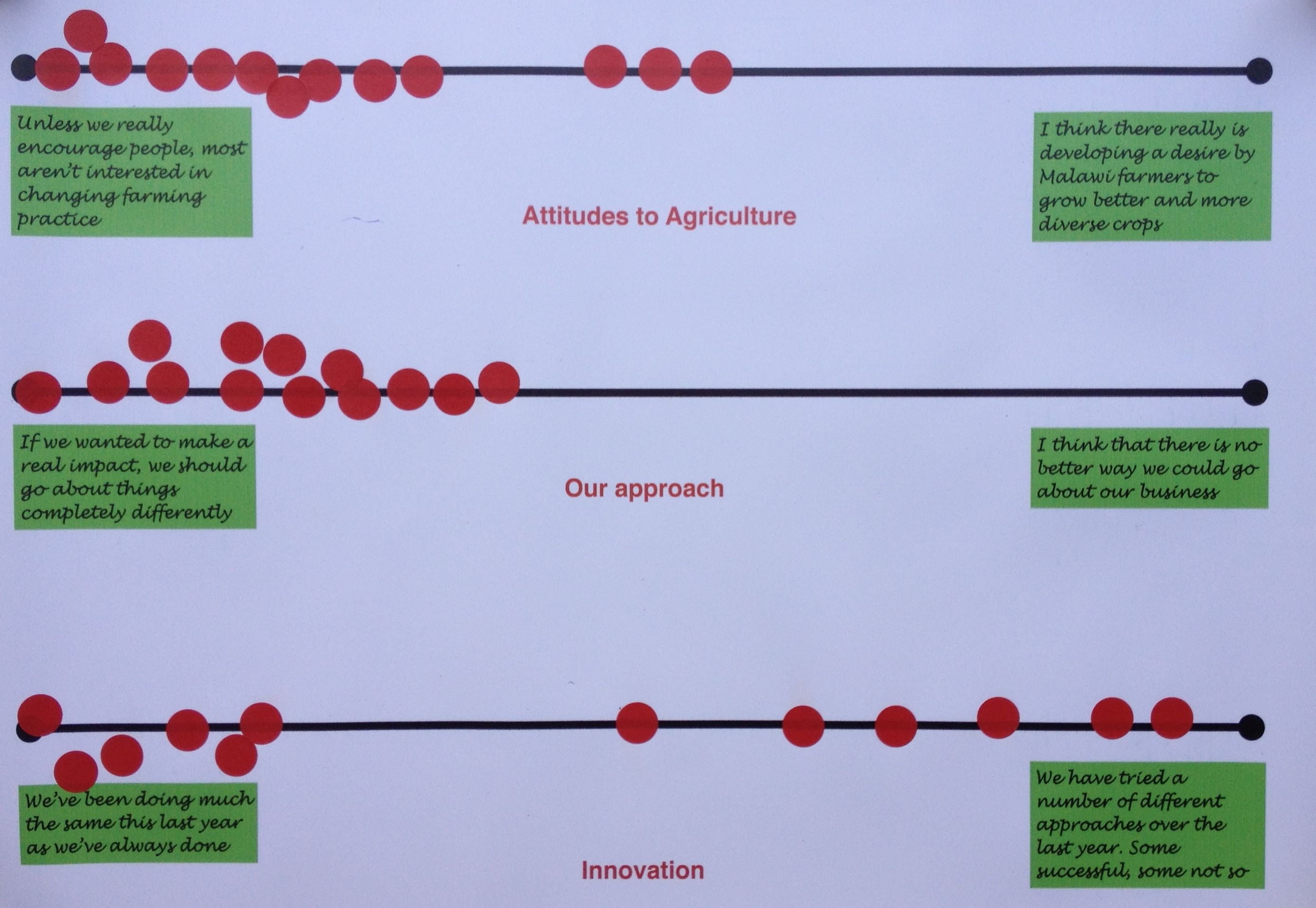We held a report back and next steps session with all eight guards providing reports. They all gave heartfelt thanks to all those that had contributed towards their recovery following the damage caused by the wild weather. The all provided at least one other to vouch that they had spent the money on what they claimed.
Joseph Purchased buckets, plates and plastic sheet and also sent money back home to his wife in the village.
Austin, whose rental accommodation was not damaged sent all the money to his parents in the village who had lost everything.
Willard : Purchased bricks and rebuilt half of what was knocked down and plastic sheet to cover the remainder. He also sent money to his widowed Mother.
Leveson: Bought bricks and a bag of cement. Rebuilt half the damaged wall. Also purchased plastic sheet to cover the remainder and household items, e.g.: plates and bucket.
Francis: Spent part of the money on child in hospital and the rest on plastic sheet to cover damage and some household items.
Robert C.: Took child for check up to hospital. Also bought plastic sheet and roof poles. Purchased household items e.g.; plates, dishes and buckets.
Ali: Bought 2000 bricks and two bags of cement and a sheet of plastic
Robert: Bought 3000 bricks and 2 bags of cement
As we have received some additional donations (thank you!) after the first workshop, we are trying a more community development focus with these funds. To start this we asked them for income generation ideas. (Grace was emphatic that they worked in pairs, otherwise she said they’d just say the same thing as each other) The ideas were:
- Buy a goat and breed it
- Buy flour and oil to make mandasi. Wife will sell by the road side
- Buy second hand clothes or fish and re-sell
- Pig farming
- Set up a mini-shop to sell groceries
- Find a job as auto-electrician (Joseph) or driver (Austin)
We asked them to come up with plans by the next meeting.
On a completely different and sad note, we attended Tigwirizane Nkhoma’s funeral yesterday. He was only 32 and apparently died of TB.

